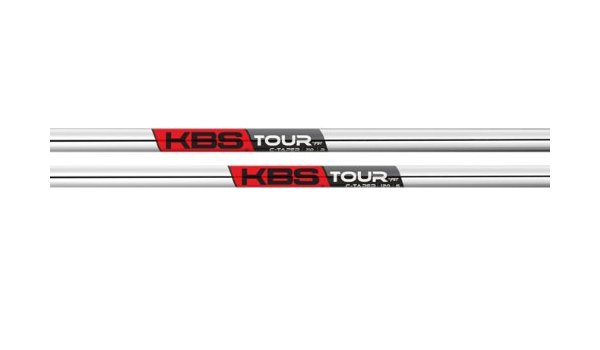KBS C Taper vs. x100: Which Should You Choose?
Shafts are available in different types, designs, and club heads. The market is saturated, and shafts come in numerous heights, weights, and stiffness.
Hence, choosing the best match for yourself might be a bit of a challenge. If you’re seeking a quality golf shaft, KBS C-Taper and X100 shaft are some of the best.
So, which is the better of the two?
Let’s break down the similarities and differences between these shafts so we can establish the better option to choose.
Are you ready?
KBS C Taper vs. x100: Overview
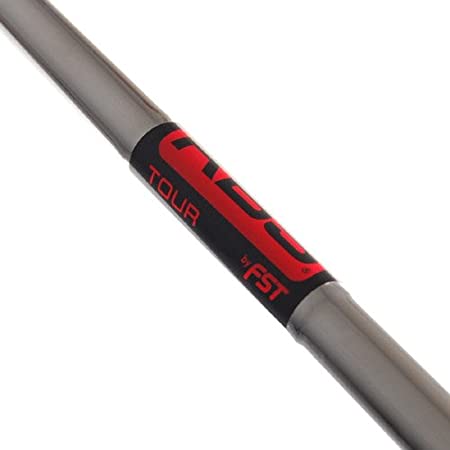
The X100 shaft is ideal for outstanding penetrating ball flight and improved control to provide the perfect accuracy.
This shaft offers the player impressive control while playing.
It features descending weight technology in parallel tip irons and constant weight technology in taper tip irons.
Undoubtedly, this shaft offers excellent performance.
The KBS C-Taper is specially crafted to provide a lower spin rate and flight while producing the benefits of a smooth feel and piercing technology.
It offers a great feel without compromising shot workability and tight dispersion.
KBS C Taper Vs. x100: Comparison
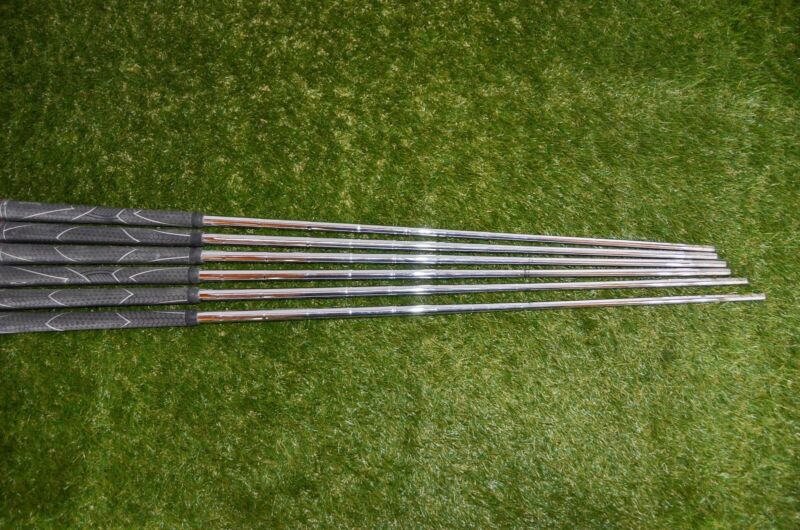
Both shafts have different overviews, weights, heights, and stiffs. To establish the best, we’ll be comparing these shafts using some factors as follows:
Looks
Regarding looks, the KBS C-Taper presents a much more distinct appearance and texture when compared to a typical set of irons.
It comes in a matte or brushed silver which gives it a more industrial look rather than the usual sleek chrome appearance.
The X100, in contrast, is designed entirely of rugged steel and has a subtle gold color emblem in the center.
We can conclude that both shafts have fascinating looks.
Feel
When it comes to the feel of both, both shafts do a great job.
The X100 has the smoothest feels, which gives an even distribution of weights during play.
The shaft feels excellent on the hand.
The C-Tapers have a more quiet feel. The feel is refined and smooth that you might not be sure you’re loading the shaft.
Weight
A remarkable difference between these shafts is the weight options available to customers.
While the X100 has a single-weight option, the C-Taper boasts a wide range of weight options.
You can select from options ranging between 110-130g. The X100 only has the 121g weight available.
Generally, the comprehensive weight option is perfect for a more significant number of golfers.
The C-Taper will be a better option, except you’re familiar with and used to the 121g shaft.
Flex
Flex is another significant difference between the two shafts. Both shafts have decent flex options depending on your needs.
The C Taper features stiff, stiff plus, regular, regular plus, and extra stiff flex. On the other hand, the X100 has only the extra stiff option.
Hence, you have a better flex option with the C-Taper shaft.
This flex option is a significant factor that might influence your decision-making.
Length
Length options are another decision-making factor.
The X100 has one length option, the 45″ length, while the C-Taper has a wide range of length options between 37.5″ and 41″.
Obviously, the C-Taper will be the better choice for you, except if you incredibly desire the 45″ length option.
USGA Legal
The USGA is a reputable golf body that provides rules that govern the development of golf accessories. All golf manufacturing companies must adhere to these rules, or their equipment will be considered illegal. These rules are essential before they ensure the companies only produce materials that are safe and comfortable for use.
According to this body, both X100 and C-Taper are considered legal equipment because their manufacturing process and features align with these set rules. Both shafts are deemed legal for use in any formal or informal golf games.
Is that All?
Well, that’s not all. However, these are the most important features you should be looking at when deciding between the KBS C-Taper and x100.
Other consideration includes the price tag of each, your skill level, and the golf course you’ll be playing at, you get the point. As long as you get the important ones right, you should be okay.
KBS C-Taper vs. x100: Pros And Cons
Pros of X100
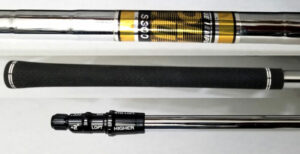
- The shaft improves swing speeds
- Provides more improved ball flights with a high spin
- You can determine the wing and right flex for different levels
- Excellent maintenance in swing and accuracy of lighter shafts
Cons
- Most suitable for professional golfers and not a beginner-friendly shaft
Pros Of KBS C-Taper
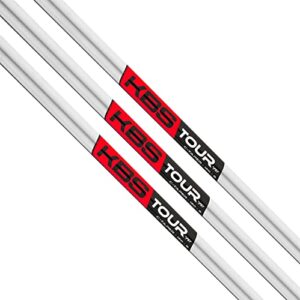
- The improved user rates give players maximum control and balance even at high speeds
- Wide range of lengths, weights, and flex options
- The optimized design provides aggressive golfers with more comfort
- It produces less spin, lower trajectories, and more distance
Cons
- Not ideal for a slower swing speed
- Relatively pricier
- The lower trajectory design might misalign carry distance from players whose fitting is improper
KBS C-Taper vs. x100: Which Should You Choose?
C-Taper and X100 shafts have different overviews, heights, weights, and flex options. They have unique features, and you’ll choose the best depending on your priorities.
KBS C-Taper has more flex, weights, and length options, while the X100 has a more incredible feel and look.
The X100 shaft is ideal for incredibly skilled golf players, while C-Taper is more beginner friendly.
From the comparison, it is evident that both outweigh each other in different areas, and you’ll only choose the one that suits your preference the most.
Related Posts:
- X100 Vs. S300: How to Choose the Right One
- Titleist AP2 vs AP3: WHICH is Better?
- Bridgestone E6 vs. Srixon Q-Star: Which is Better?

Want to Get Better at Golf?
Get "Ben Hogan's Five Lessons" and join thousands of others improving their golf skills.
Learn the Fundamentals: Stance and Posture > Golf Grip > The Swing.
This book has LOADS of positive reviews. THOUSANDS OF REVIEWS. A MILLION COPY SOLD. CHEAP!
Get the Book Here
